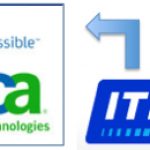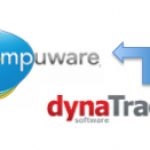IT Performance tools -> Software as a Service?
I had lunch with a field executive from one of the big IT performance tools vendors the other day. He told me that the market mega trend in the western world in his domain is a demand for IT performance tools as a service.
Now haven’t we heard that one before? Sure, we have, but not in this segment of the market.
IT performance tools are for enterprise clients with server parks, thousand of users and complex application environments. The traditional paid-up license/annual maintenance model has dominated this market, where the customer assumed responsibility for all operational issues including upgrading to newer versions. The software vendor provided the software “as is” (at least in legal terms) and the customer paid for the learning curve enabling him to run the software himself.
This model is apparently under severe attack. The customers don’t want it anymore and “new kids on the block” are providing IT performance tools on different terms and conditions.
The rationale is quite simple. The customers want improved performance in their IT environments. Improved performance means:
- Faster implementation of new customer related services
- Faster implementation of internal systems
- Improved response times on all services
- Improved availability of all systems
- Better utilization of the IT infrastructure
- Transparency in the relationship between the IT investments and operational expenses and the business activities
- Protection against hostile attacks from hackers and other intruders
To deliver these business driven services and improvements, the customers need ongoing monitoring and information, but they don’t necessarily need to run all the technical systems themselves.
What’s new?
Now, this sounds so obvious, so what’s the news?
Well, to make the story short: Enterprise IT departments are under severe pressure. They must deliver more, faster and with less cost. To do so they are forced to reallocate their manpower from the technical operation to the more customer-focused development areas. Consequently they must cut investments and improve flexibility in the IT infrastructure area.
The increased demand on delivering business value has thus forced the CIO to take the fight against his own organization and give up the demand for full vertical control. He needs the data and information to run his business, but he doesn’t need to control all the data and information “supply systems”. And the hassle associated with the learning curve and the constant upgrading of software doesn’t add any value to his business either.
So what?
The result of the awakening in the corporate IT departments is a demand for a new type of service from the IT performance tool vendors.
The CIO wants the data and information from the IT performance tools, but he wants the vendor to assume responsibility for installing and operating the environment. He wants an SLA and he wants to pay a recurring subscription fee related to the business value provided.
This means that the IT performance tool vendors must change from being software development centric to become service centric organizations or at least they must cooperate with someone who is capable of providing this delivery format.
And that may not be as easy as it sounds. It requires a new legal framework, it requires new skill sets and it has a different cash flow profile.
Opportunities for new players?
Does the demand for IT performance tools as a service open up opportunities for new players? Most likely yes!
The new “Cloud” platform providers are well positioned to assume responsibility for delivering the infrastructure capacity required. They have the skills and the muscle required to “master the beast” and to manage an enterprise SLA. This means that there will be fewer, but much bigger customers (just like the development in the Mainframe market, where MIPS capacity keeps growing, but the number of customers are declining due to the outsourcing trend).
Bigger customers means concentrated bargaining power and that may be tough news for the IT performance tools providers.
Bigger customers also mean less innovation. It is a fact that enterprise customers are not early adaptors of new technology. They prefer to do business with the established vendors, and they are difficult to manage for the innovative start-up.
The changed cash flow profile will be a challenge for the innovators, but it may also be an opportunity as the engagement threshold for new customers will be lower.
What’s to come?
We haven’t seen the full implications on the shift in market for IT performance tools yet. Traditional license deals are still made every day, but logic seems to be driving the change. It will be interesting see if reality will follow the logics. In the real word this not always the case.









